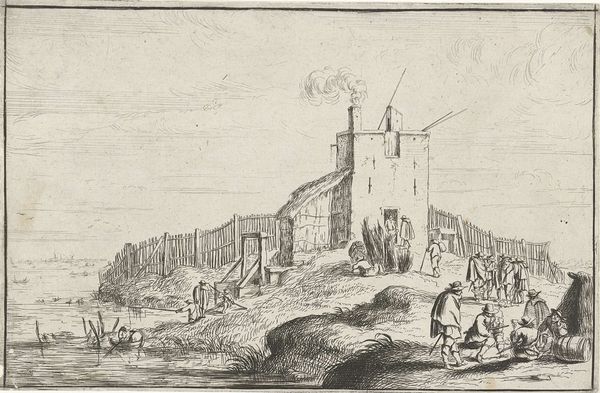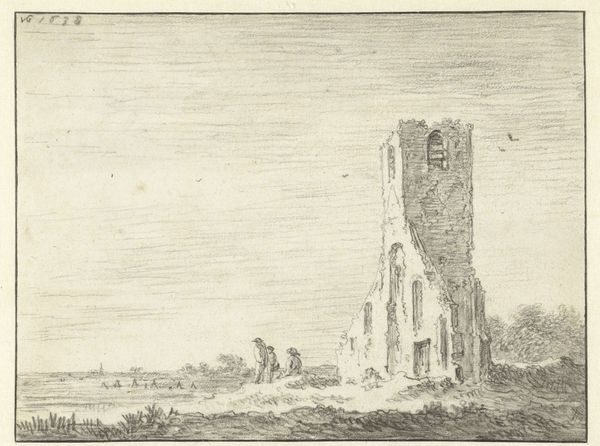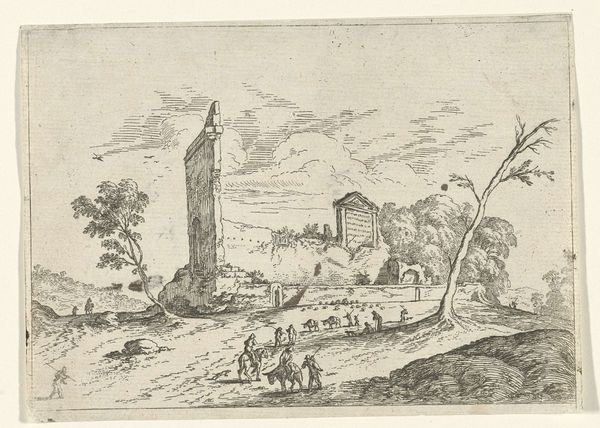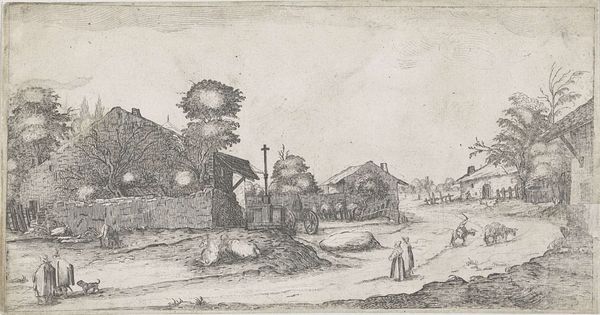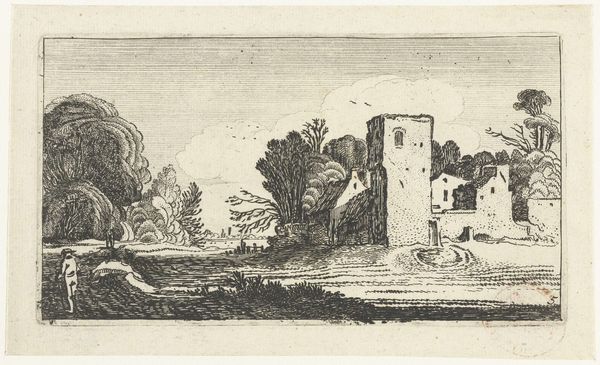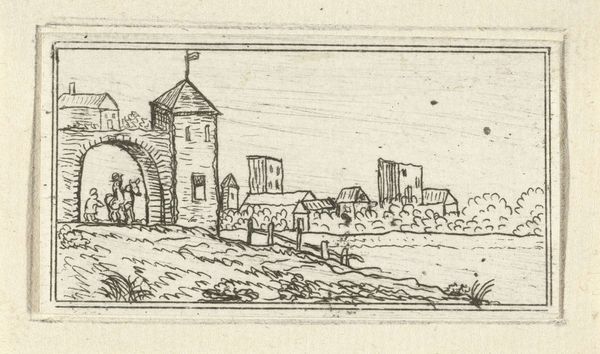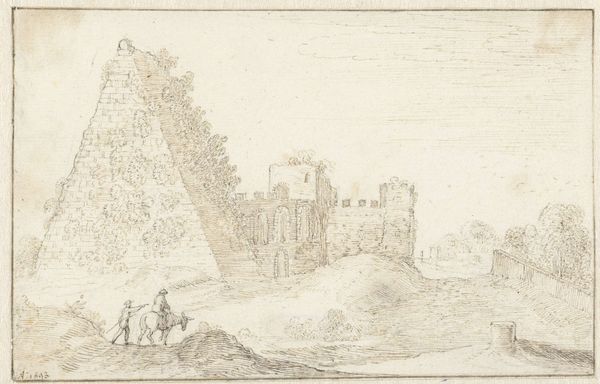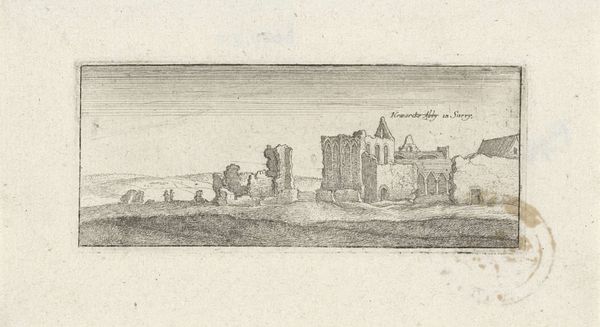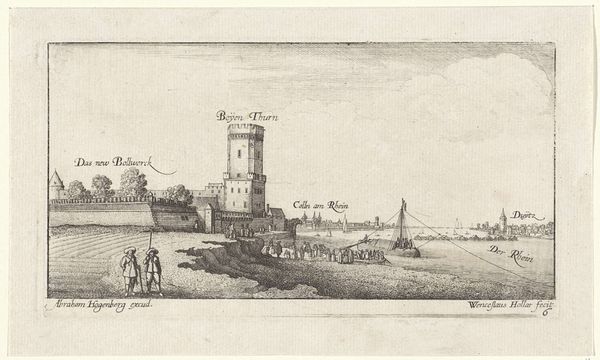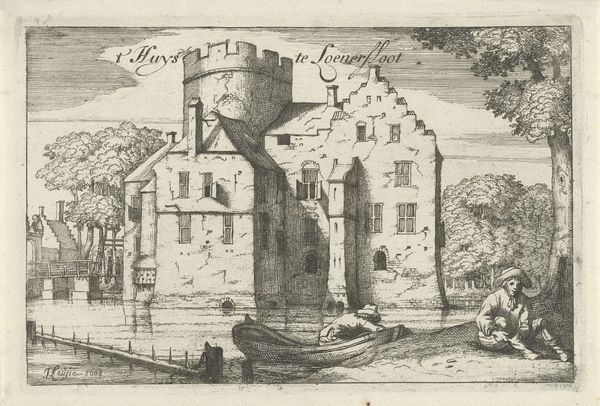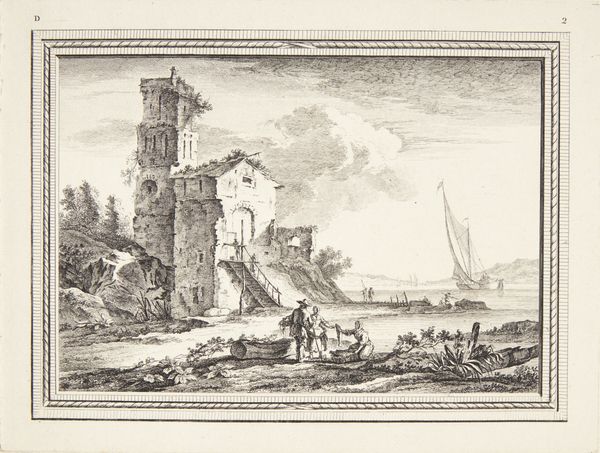
print, etching
# print
#
etching
#
landscape
#
genre-painting
#
northern-renaissance
Dimensions: height 58 mm, width 97 mm
Copyright: Rijks Museum: Open Domain
Editor: This is "Path by a Lighthouse on the Beach," dating from 1610 to 1617. It's an etching, currently at the Rijksmuseum, and credited to an anonymous artist. The detail is amazing. How can an artist create this level of depth using what looks like only a needle? What do you see in this print? Curator: I see an early exploration of industrial infrastructure impacting labor and trade. Look closely: the etching process itself involves labor, creating multiple prints for distribution and sale. How does the medium influence our perception of value? Is a printed landscape "lesser" than a painted one, in your view? Editor: That's a great question. I think the very act of making multiples democratizes the image, making it more available, less precious, perhaps, than a unique painting? It also feels more directly connected to the process, less mediated by paint, you know? Curator: Exactly. This print exists within a network of production, distribution, and consumption. What labor enabled the lighthouse's construction and maintenance? Who were the consumers of its service? The image reveals the interrelation of natural resources, constructed environments and social dynamics. Think about what it is like working with metal: what kind of effort do you think that the anonymous artist put into each print? Editor: Right. Now I think that the etcher has been highly skilled; each precise line a testimony to manual craft. You are inviting us to recognize this person's work, skill, and position as an early modern producer. Curator: And consider its availability within burgeoning print culture of the Dutch Golden Age. An image circulating – shaping ideas of landscape, trade, and progress. Editor: So, from a seemingly simple landscape print, we can unpack larger economic and social narratives embedded within its very production! Thank you! Curator: Indeed, focusing on the materiality and process reveals the interconnected systems at play in the image and its making. I am intrigued to reflect on the tension between craft and industrial advancement that you identified.
Comments
No comments
Be the first to comment and join the conversation on the ultimate creative platform.
